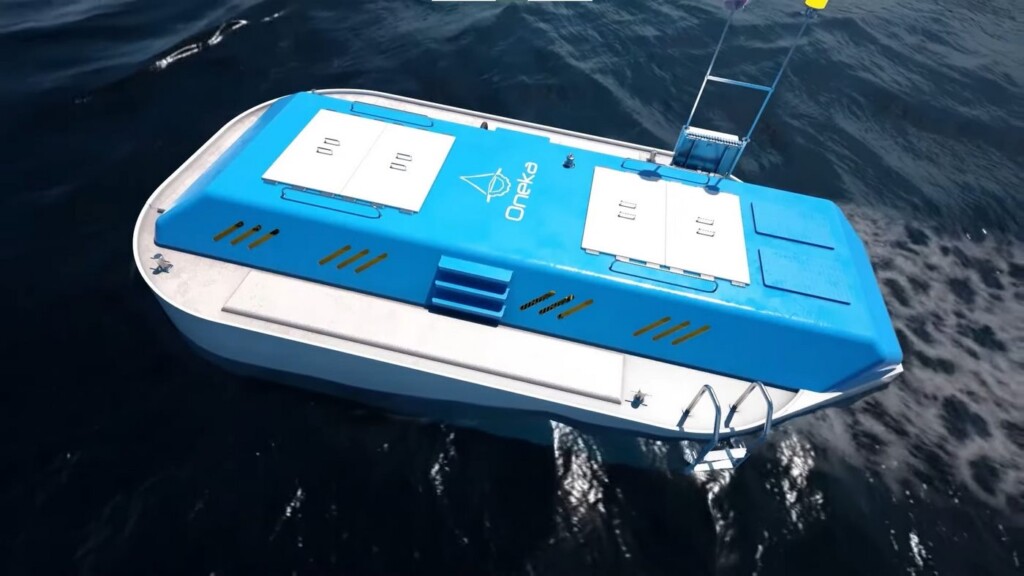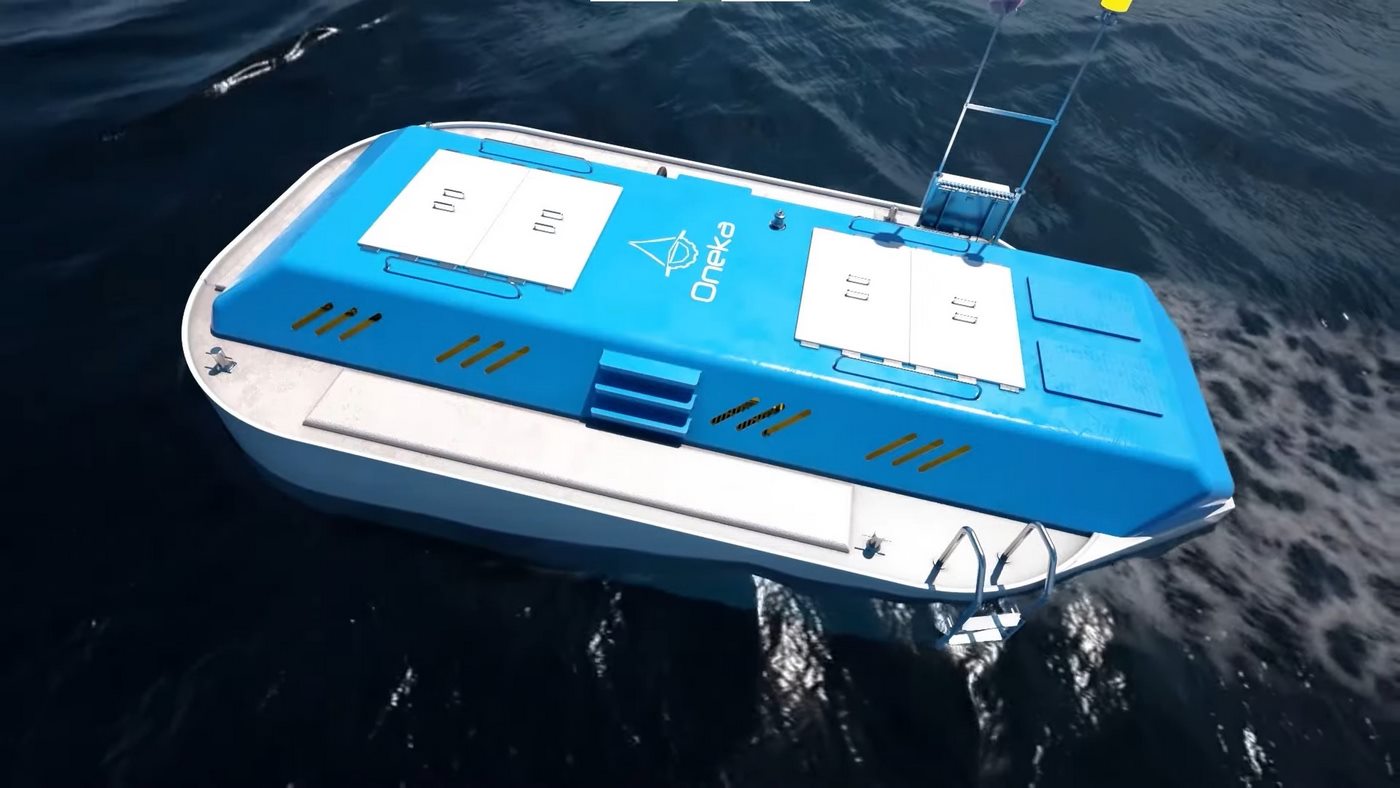
If a new Canadian startup is successful with its product, it could decarbonize the whole desalination industry, using only energy from the sea to turn seawater into drinking water.
300 million people rely on seawater from a global industry of 21,000 desalination plants, nearly all of which use fossil fuels to complete the energy-intensive process of thermo-desalination, or reverse osmosis—the two methods that can turn seawater into clean water at scale.
The startup Oneka however uses modular machines that attach to the seafloor like buoys and convert the kinetic energy of 3-foot waves into mechanical energy that drives a reverse osmosis and creates 13,000 gallons of drinking water a day with the largest commerically-available module.
It’s expected that if the worst predictions of climate change come to pass, more and more of the world will rely on desalinated water at least some of the year according to data collected by the BBC, and the industry is predicted to grow 9% to a yearly value of $29 billion by 2030.
Oneka presents a suite of advantages over land-based desalination plants. The first is that it takes up no space on land; particularly important for island nations. The second is that their modules emit no greenhouse gases. The third has to do with a drawback of desalination technology as it stands.
Whether using the thermal process or reverse osmosis, desalination of seawater creates a waste product of highly saline brine water or salt. If released or leaked back into the ocean, it can poison acres of sea life, or plants and groundwater if released on land.
DESALINATION AT HOME: For First Time, Seawater Made Drinkable by Sunlight to Be Even Cheaper Than Tap Water
Oneka’s technology mixes the saline solution with three-quarters of all the seawater taken up in a single day, releasing it back into the ocean with a mere 25% greater content of salt than before.
The module desalinators can be chained next to each other to conserve space and make it easier for the piping system that transfers the clean water on land to be installed.
MORE CLIMATE TRANSFORMERS: Patagonia Gives Away Its Entire $3 Billion Worth To Fight Climate Change
Making the machines the complete eco-friendly package, Oneka has found their chains, anchorage, and buoys are all sealife friendly, and quickly become populated by various creatures according to the company.
They have tested their buoy desalinators in harsh weather of 6-meter waves (nearly 30 feet) and found they work well. These early modules have already been sold to communities in Chile, one of the driest parts of the world.
WATCH how it works below…
SHARE This Potentially Revolutionary Invention With Your Friends…




















